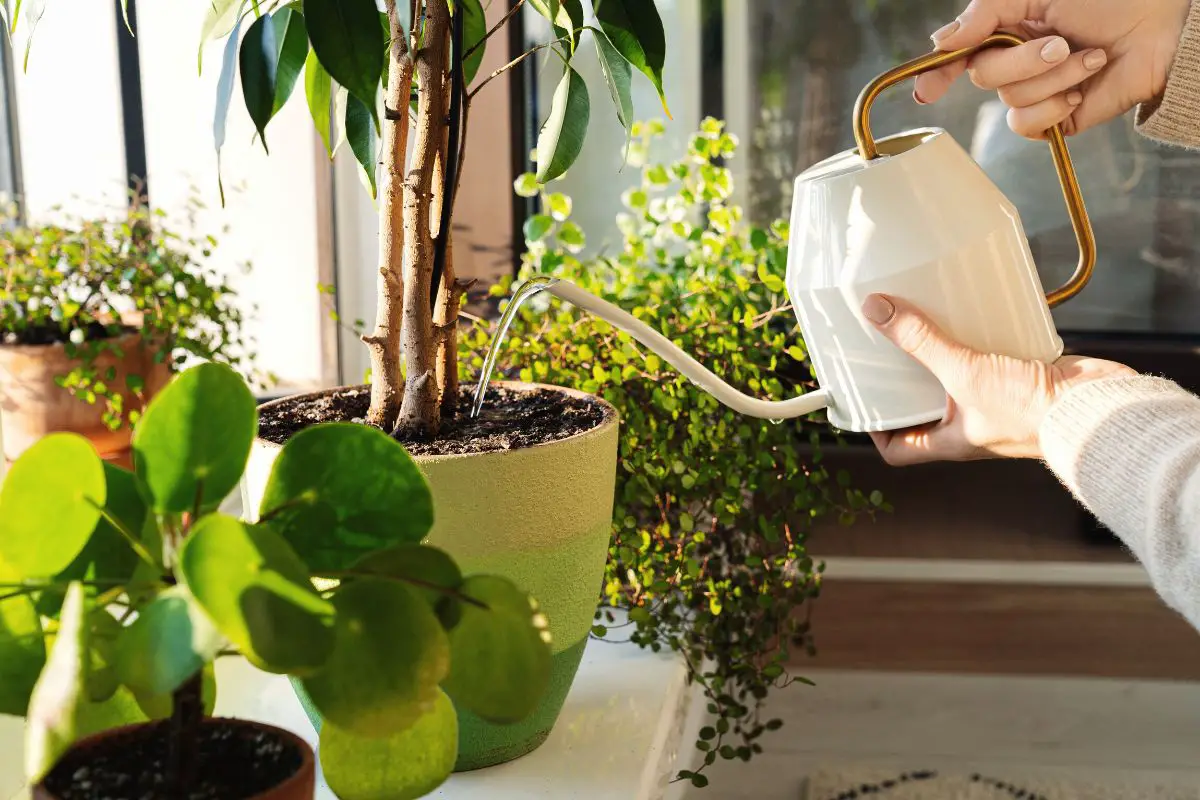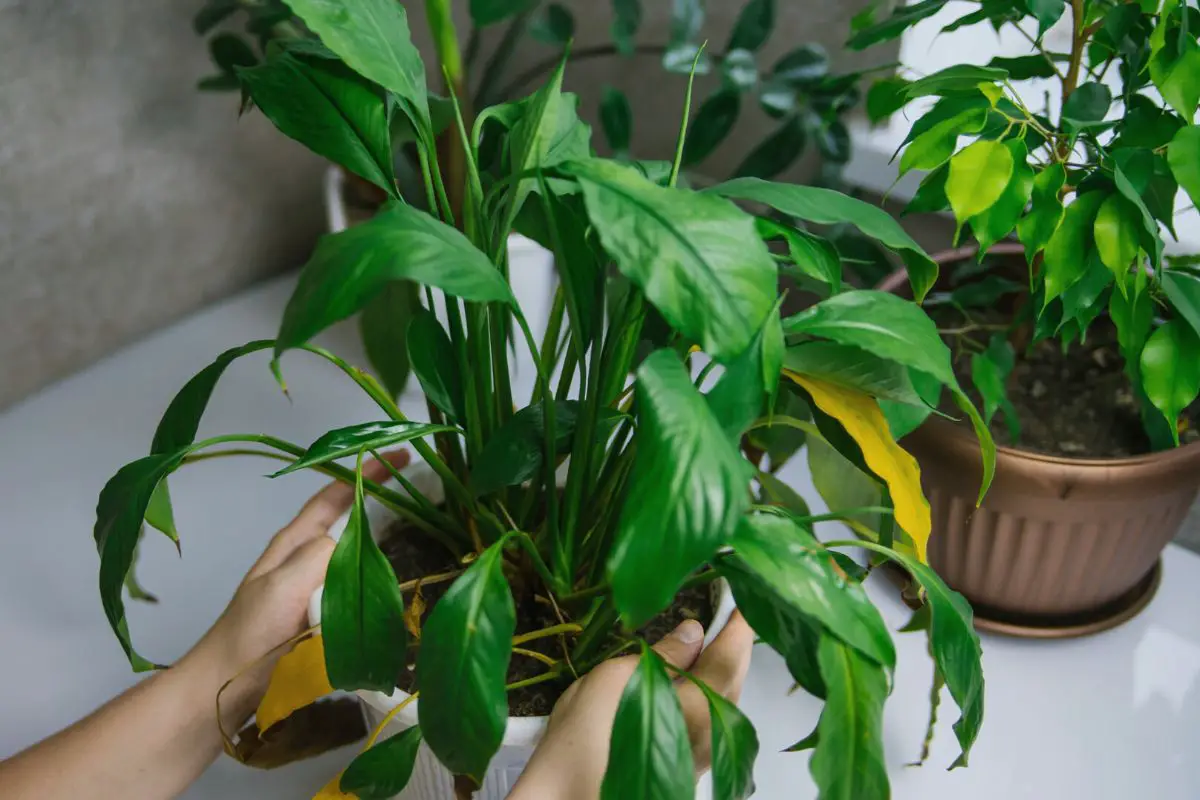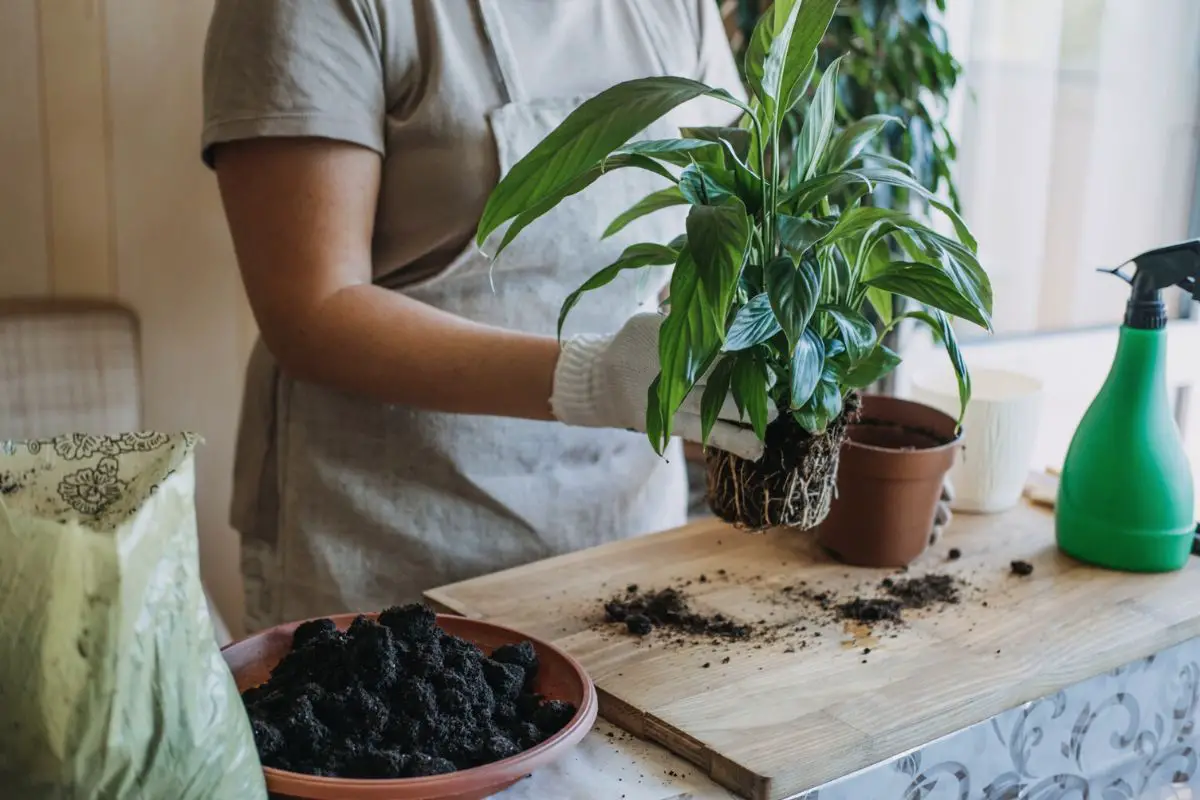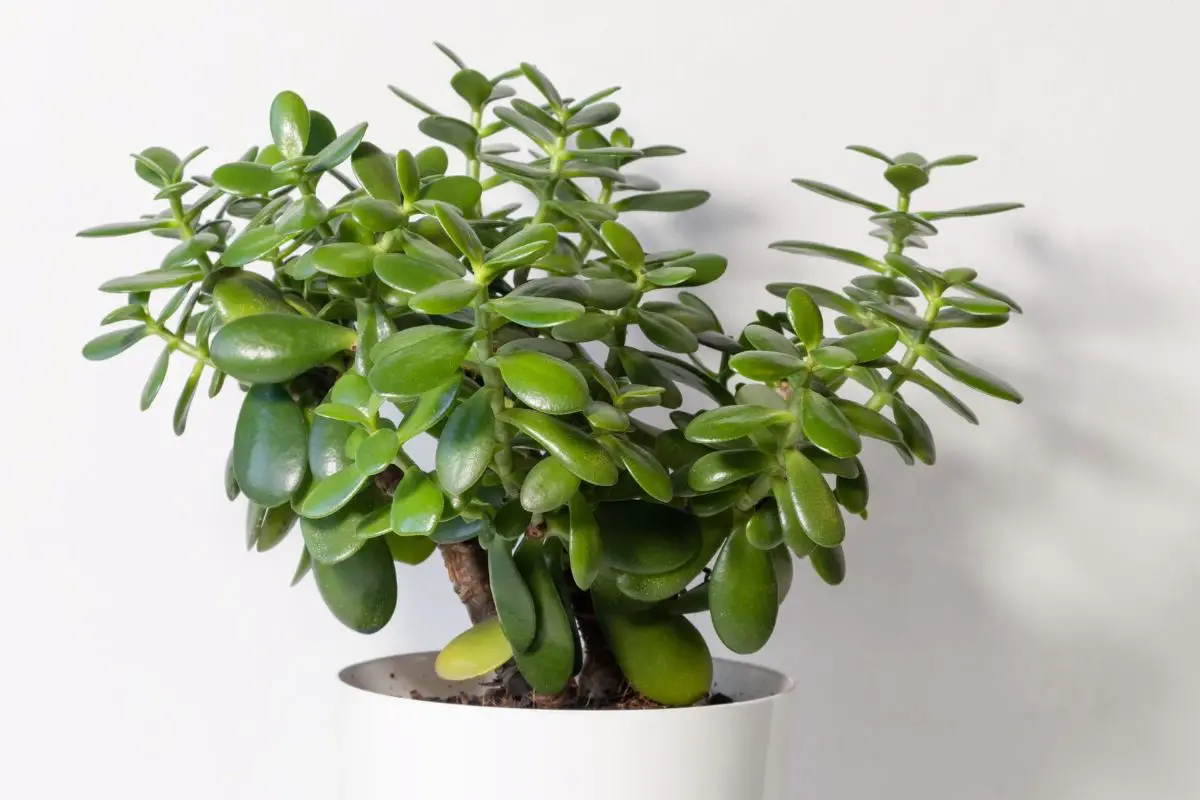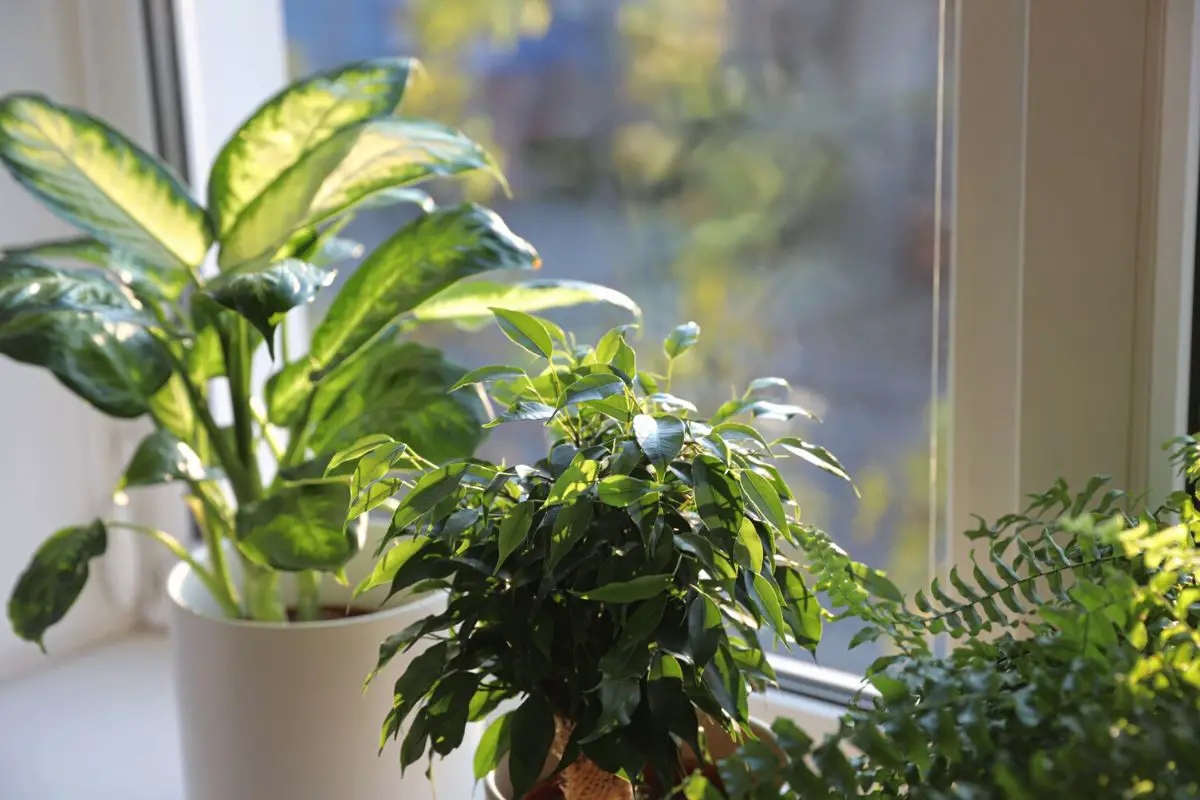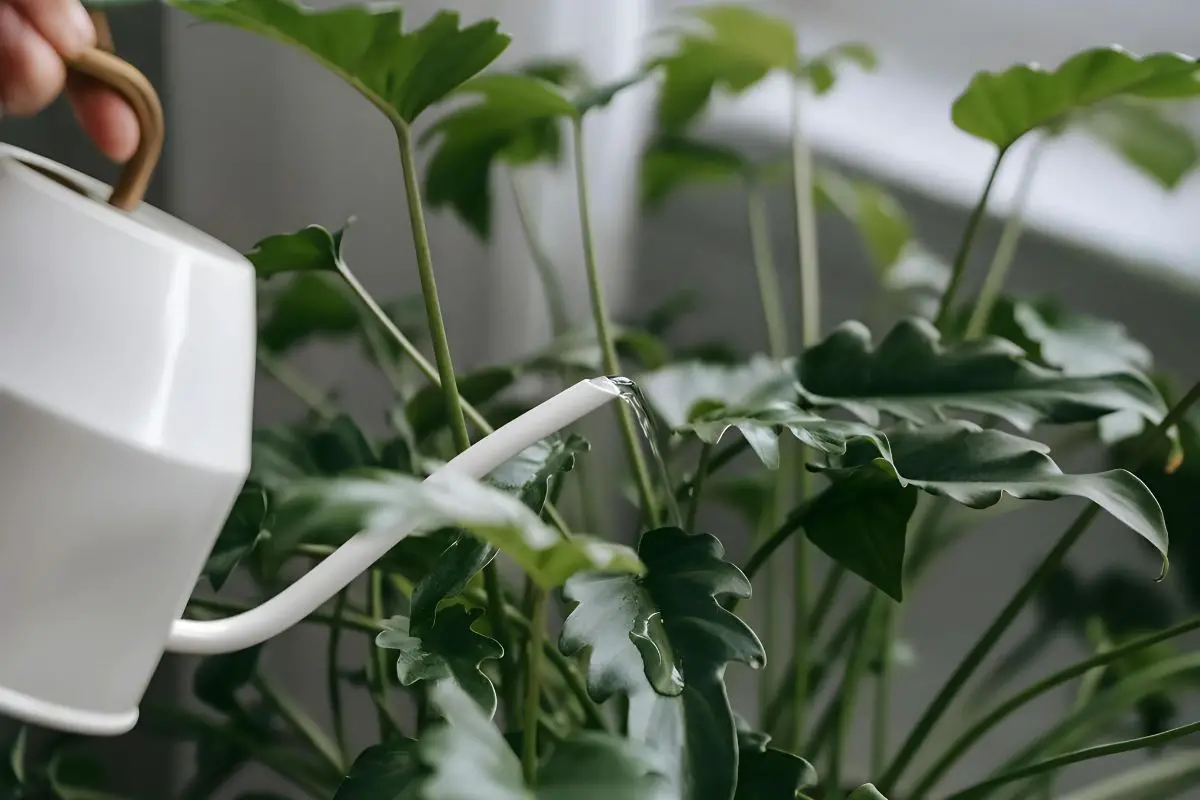Jade plant (Crassula ovata) is a popular succulent that’s generally easy to grow and care for. However, when neglected or kept in suboptimal conditions for too long, it will show signs of stress through discolored leaves.
The leaves of jade plants can turn yellow due to the following causes:
- Overwatering
- Underwatering
- Too much or lack of sunlight
- Improper temperature
- Nutrient deficiencies
- Pest infestations
- Diseases
- Aging
Jade plants are famous for their jade-to-deep green leaves that sometimes turn fire-red or sunset-orange, depending on the species. The unhealthy yellowing of leaves can significantly take away the beauty of this plant. In this article, I’ll explore the causes of discoloration and their corresponding solutions.
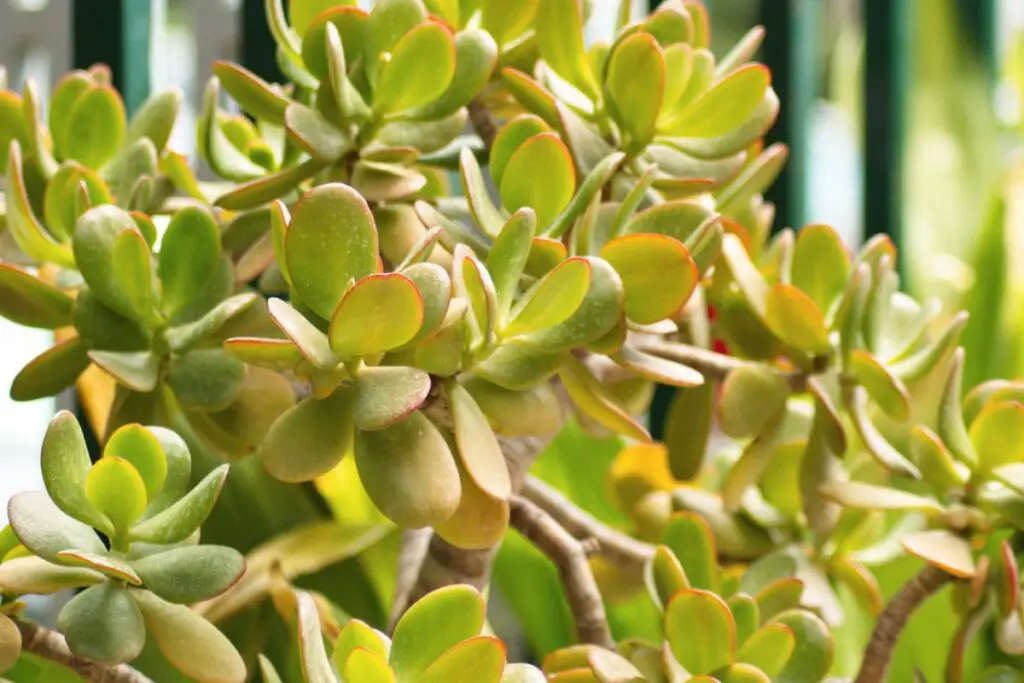
Jade Plants: An Overview
As one of the most low-maintenance houseplants, jade plants have minimal requirements to keep them thriving indoors, including the following:
- Light: 4 hours of direct sunlight daily from an eastern window or a full day of bright indirect light from a southern window. It also helps to give your plant a quarter or a half turn every time you water it for balanced growth on all sides.
- Soil: Well-draining soil, such as a standard succulent mix or homemade recipe containing equal parts compost and perlite.
- Water: As soon as the upper half of the potting mix is dry. This can take 2-3 weeks in spring, 10-14 days in summer, or 4-6 weeks in fall to winter.
- Temperature: 65-75 °F (18-24 °C)
- Humidity: 30-50%
Symptoms of Yellowing Leaves
Jade plants can tolerate occasional dips outside these parameters with little to no signs of stress. However, chronic care issues will prompt your plant to send distress signals through the yellowing of leaves in the following ways:
- Yellow leaves with red tips
- Yellow leaf tips that eventually turn brown
- Discoloration of the older, bottom leaves
- Speckled white or yellow dots
- Scab marks (yellow or brown)
You may also notice other related symptoms, including the following:
- Drooping or wilting foliage
- Water-soaked spots
- Browning foliage with crisp, dry tips
- Wrinkled leaves
- Dropping even the healthy-looking leaves
- Leaning or legginess
- Flatter or thinner leaves
- Brown or black scorch marks on the leaf surface
- Mushy roots and stems
Common Causes (& Fixes)
A few factors can cause your jade leaves to turn yellow. Some may have overlapping symptoms, so it’s important to distinguish them to apply the correct solutions.
Overwatering
Overwatering is the primary cause of stress and yellowing leaves in jade plants. As succulents, jades don’t like sitting in wet soil for extended periods. Overwatering risks increase if you water your plant frequently or if the soil mix has poor drainage.
Too much water can suffocate the small, shallow roots, causing them to rot. The rot can then spread to the stems, turning them mushy. Left unattended, this can kill your plant.
Before this happens, it’s important to diagnose the early signs of overwatering, such as the following:
- Pale or yellow leaves starting from the bottom
- Water-soaked spots or lesions on the leaves
- Dropping of healthy or discolored leaves
You can treat the early stage of overwatering by allowing your soil to dry out a bit more between watering sessions.
Keep the following watering tips in mind to prevent overwatering (and even underwatering) in the future:
- Wait until the top half or so of the potting mix is dry before watering your plant again. You can check this by inserting a wooden chopstick through the potting mix and see if it’s dry halfway down.
- Around 10-14 days after watering, test the moisture content of the leaves by squeezing a few between your fingers. If the leaves bend or fold easily between your fingers, that means your plant is thirsty.
- Water your plant deeply until you see excess dripping from the drainage holes. Let the pot sit on a drip tray until all the excess water is removed.
If fewer than half of the roots and a few stems have decayed, follow these steps to treat your plant:
- Scrape the soil away from the edges of the pot with a spatula or a flat knife. This will prevent damaging the roots further.
- Slide the plant out of the pot while catching it with one hand.
- Loosen the soil around the roots using a mini rake or wooden chopstick, and break it apart using your fingers.
- Rinse the roots in gentle running water to remove the remaining soil.
- Prune the brown, black, or mushy roots using sterile shears.
- If your plant has multiple stems or branches, cut the mushy ones as close to the healthy stems as possible. Wipe the knife or pruning shears with an alcohol-soaked cloth between cuts.
- Dust the cut branch or stem sections with finely ground cinnamon powder to prevent further infections.
- Let the plant rest for 3-7 days to form callus on the cuts. Keep it in a cool, dry room away from direct sunlight.
- Repot in moist fresh, sterile soil with better drainage. Choose a pot that’s 2 inches (5 cm) wider and deeper than the remaining rootball.
- Place the plant in a bright area away from direct sunlight to encourage the plant to grow new roots and prevent rapid moisture loss. Plants recovering from root rot due to overwatering require one level less light intensity than before repotting.
- Wait one week or until the top half of the new soil mix is dry before watering your plant deeply.
Jade plant stems should be green inside. If the main trunk has rot (black or mushy sections) inside, your plant likely won’t survive repotting. In this case, you must propagate the plant through stem or leaf cuttings.
Follow these steps to find and propagate the remaining healthy stem sections:
- Use a sharp, sterile knife to cut through the trunk from the bottom. You can’t save the root system if the rot has climbed through the main trunk.
- Inspect the trunk for signs of rot.
- Continue cutting stem sections at 1-2-inch (2.5-5 cm) intervals until there’s no more sign of rot.
- Dust the bottom of the remaining stem with cinnamon powder and let it form a callus for up to a week.
- Plant the cutting in a 4-6-inch (10-15 cm) sterile pot with fresh soil, where it can stay for a year or until next spring before repotting.
- Place it in a bright spot away from direct sunlight until it’s ready for repotting.
Pro tip: If you’re repotting a plant or cutting due to root rot outside the growing season, wait until the second spring before transplanting your plant again to allow it to form sturdy roots. Use high-quality soil mix and be mindful of your plant’s care requirements during recovery.
Underwatering
Chronic underwatering can also turn jade leaves yellow but the process of discoloration is a bit different.
Here’s how it progresses:
- Wrinkling
- Drooping
- Yellowing leaf tips (usually starts from the terminal leaves)
- Leaf tips becoming brown, crisp, and dry
- Leaf drop
Long intervals between watering sessions can also leave the soil bone-dry and more prone to becoming hydrophobic. Fatty and oily substances in the soil from plant roots or decomposing organic matter will bind with the coarse soil particles and repel water.
As a result, the roots cannot access moisture even after you water the plant. The water will quickly drain through the holes without rehydrating your plant.
You can treat underwatering problems based on how severe it is.
Here are some tips:
- Underwatered but with soil rich in organic matter: This soil mix is easier to re-wet. Water the surface gradually to give the soil enough time to soak in the moisture. Stop watering when you see the excess dripping from the drainage holes.
- Mildly hydrophobic soil: Soak the bottom third of the pot in a tub of water for 10-30 minutes. Let the roots and soil absorb moisture from the drainage holes until the soil surface feels moist. Place the pot over a drip tray to remove excess water.
- Crusty, cracked, and severely hydrophobic soil: Repot your plant in fresh soil mix with better moisture retention (compost-perlite mix) using the same repotting tips above. Keep your plant in an area with one level lower light intensity and water it deeply right after repotting.
Remember the proper watering tips previously discussed to prevent this issue from reoccurring.
Too Much or Lack of Sunlight
Jade plants prefer at least 4 hours of direct sunlight daily for lush green or colored foliage. Incorrect light conditions can discolor the leaves.
Here’s how to distinguish light-intensity problems and how to address them:
| Issue | Symptoms | Solutions |
| Too little light | Pale or yellow leaves Leaves become flatter and thinner Stems become leggy and lean toward the light source | Move the plant about 2 feet (60 cm) closer to a bright window or Switch on a full-spectrum 40-watt grow light 6-12 inches (15-30 cm) directly above the plant for 14-16 hours daily |
| Too much light | Leaf tips turn red The red tips eventually turn yellow due to dehydration from prolonged exposure to intense sunlight The surface of sun-exposed leaves develops black or brown, dry spots (leaf scorch) | Move the plant about 2 feet (60 cm) away from a bright window or hang sheer curtains to filter the light and Rotate the plant by 90-180° every time you water it to prevent over-exposure of one side to intense sunlight |
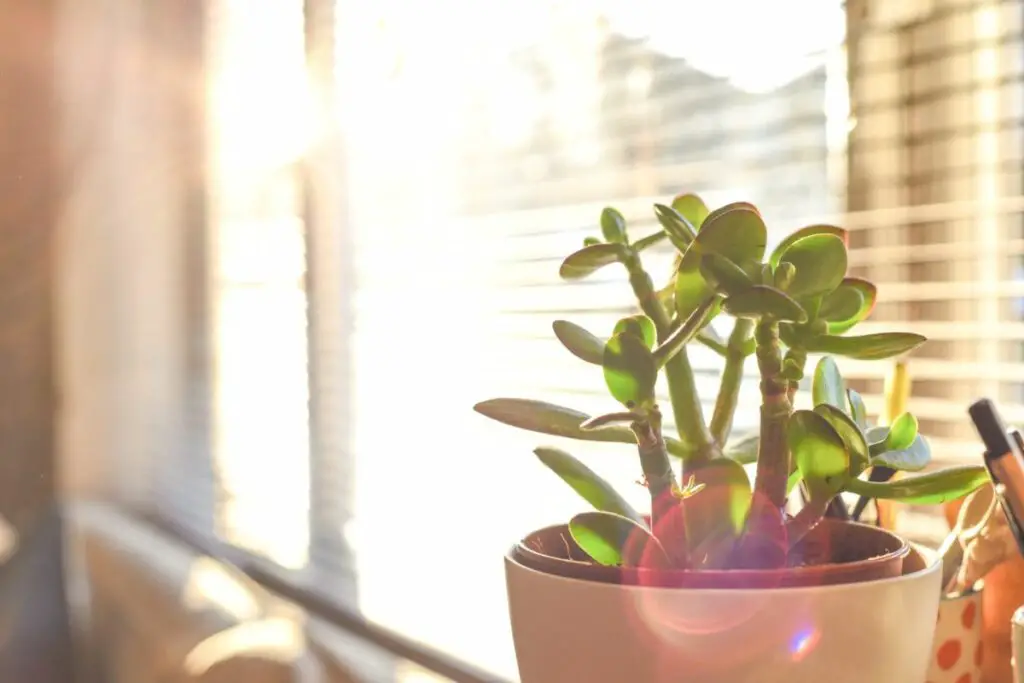
Improper Temperature
Jade plants like moderate temperatures ranging from 65-75 °F (18-24 °C), similar to their native environment. They thrive when evening temperatures remain above 55 °F (13 °C).
Conversely, extreme temperatures can reduce the quality and appearance of the foliage and might even kill your plant.
Heat Stress
When grown in full sun in hotter climate zones (USDA zones 10-12), jade leaves develop unnatural red tips as a sign of light and heat stress. The red tips may eventually turn yellow if the plant is also underwatered.
This shouldn’t be confused with the natural reddening of the leaves of a few jade plant varieties, such as ‘Campfire’ and ‘Hummel’s Sunset’. These plants typically change leaf colors in winter if they receive enough sunlight in spring and summer and are happy.
Jade plants can tolerate temperatures around 90 °F (32 °C) if they receive enough water and partial shade.
To help heat-stressed jades:
- Adjust your watering frequency accordingly by checking the soil more often during hot and dry conditions.
- Hang sheer curtains against the windows or install shade covers over outdoor jades to filter the light during midday.
Cold Shock
Jade plants need 2-3 months of lower temperatures (50-55 °F or 10-13 °C) in the fall to promote flowering in winter. When exposed to temperatures below 50 °F (10 °C) for extended periods, your plant will grow more slowly and the flower buds may abort.
These plants are native to frost-free regions and are intolerant of temperatures below 40 °F (4 °C). Outdoor jades are more vulnerable to this problem.
The water along the stems and leaves may freeze and thaw. The stems will flop and the leaves will turn yellow due to cold shock. The stems may become mushy and the only solution would be to propagate the remaining healthy leaves—if any.
Prevention is more important in this case. Here are some tips:
- Maintain indoor temperatures within optimal range.
- Keep your plant away from drafty windows, air conditioning units, or heating vents.
- Don’t grow jade plants outdoors if your area experiences frosts.
- In case of unusually cold winters with occasional frosts in USDA zones 10 and 11, bring potted outdoor jades indoors or cover in-ground jades with burlap.
Nutrient Deficiencies
Jade plants are slow growers and not heavy feeders. However, lack of fertilization for extended periods, especially in poor soil, may lead to nutrient deficiencies.
Portions of or the entire leaf surface can turn yellow if your plant lacks any of the following nutrients:
- Nitrogen
- Magnesium
- Iron
Unlike non-succulent houseplants, jade leaves don’t have distinct veins to determine interveinal chlorosis due to iron and magnesium deficiency. It can also be impractical and costly to send potting soil samples to a laboratory for nutrient testing.
The best solution is to rule out the other issues listed above. After that, in spring, feed your plant with a half-strength 10-10-10 liquid fertilizer with micronutrients. You can incorporate it into your regular watering schedule.
Observe if the leaves take on a greener hue before the second application. Continue applying diluted fertilizer at watering until late summer.
Pro tip: Don’t use full-strength fertilizers even when treating nutrient deficiency problems. Excess fertilizer salts in the soil can dehydrate the plant roots and cause more severe problems.
The following tips can help you avoid future issues with nutrient deficiency:
- Use high-quality succulent mix or compost during repotting to nourish your plant for the first 1-2 years.
- Fertilize your plant using slow-release 10-10-10 NPK fertilizer once a month from spring to summer (in the years between repotting).
- Alternatively, use a quarter- or half-strength liquid fertilizer every time you water your plant during the growing season.
Pest Infestations
Mealybugs and spider mites feed on the sap of the fleshy jade leaves. In large enough populations, they can discolor affected leaves.
You can distinguish between them based on the following details:
- Mealybugs: Eggs and adults have cottony white waxy covering. Severely infested leaves turn yellow (entire surface).
- Spider mites: Fine webs along the stem, petioles, or leaf undersides. Affected leaves are paler and speckled with fine white or yellow dots.
You can eradicate these pests through the following steps:
- Scrape the insects off the leaves using cotton swabs dipped in rubbing alcohol.
- Drop them in soapy water.
- Repeat this every few days for a few weeks until all pests are gone.
In addition, pluck off or prune the affected leaves because they won’t recover from the damage. It can also improve the appearance of your plant.
Diseases
Jade plants have few diseases and among them, powdery mildew is the only one that can distinctly cause yellow or brown scab marks on the leaves. This disease is caused by fungi under the Sphaerotheca genus.
It’s important to prune the infected leaves and properly discard them to prevent the spread of disease to other houseplants.
Powdery mildew can be tricky to fix because the fungi may develop resistance to common fungicides. It may require alternating between two or more types of fungicides to eradicate the disease.
Common examples include:
- Sulfur dust
- Wettable sulfur
- Potassium bicarbonate spray
Read the product label and follow the instructions carefully to protect yourself from potential skin irritation or inhalation problems. When applied properly at the product-specific dosage and frequency, these fungicides can also prevent the disease from reinfecting your plant.
Here are other methods to avoid the disease:
- Maintain the humidity level between 30 and 50%.
- Prune up to 30% of the foliage in spring or summer to improve air circulation.
- Avoid wetting the leaves when you water your plant.
Aging
Jade plants can live several decades with vibrant leaves, if kept in optimal conditions. If you don’t prune your jade leaves regularly, older ones will naturally turn yellow before falling off. The bottom leaves typically fade before the terminal ones.
You can fix the issue by removing the discolored leaves. When pruning your plant, limit foliage removal to only 30% while focusing on the older leaves first before the unruly growth.
Routine Care and Maintenance
Here are some essential practices that can help maintain your jade plant’s health and lush, green foliage:
Regular Inspection and Grooming Practices
Jade plants require infrequent watering.
You can make a plant calendar and use the same schedule for the following activities:
- Dust your plant’s leaves using a clean, moist cloth.
- Give your pot a quarter or a half turn.
- Check the leaves and stems for signs of pests, diseases, or stress.
- Remove shoots growing in odd places along the stems.
Seasonal Care Adjustments
You need to adjust your plant’s watering schedule and environmental temperature for optimal growth.
Here’s how:
- Water your plant more frequently during the growing season, and reduce watering in the fall and winter.
- Reduce the temperature around your plant to the lower 50 °Fs (10 °Cs) in the fall to improve your chances of witnessing the beautiful flowers in winter.
Regular and Proper Pruning
Jade plants don’t put out much height during the growing season, but they do produce dense foliage.
You can maintain your plant’s shape with these pruning tips:
- Prune up to 30% of the foliage once or twice during spring and summer.
- Regularly check and pinch unwanted shoots sprouting along the trunk for a tree-like or bonsai growth pattern.
- Don’t wait until the small shoots grow woody branches because cutting them will leave wounds on the trunk, which can serve as entry points for fungi or bacteria.
- Remove fallen jade leaves from the soil surface before they develop roots. They can be weedy and steal moisture and nutrients from the main plant. If the roots grow long enough, they can even compete for space and become entangled with the main plant’s roots.
Repotting and Root Pruning
You can keep mature jade plants in the same pot for up to 5 years before repotting. Since it’s recommended to prune the shoots regularly, removing the corresponding volume of roots before repotting will help maintain a balance in your plant.
It’ll also allow you to use same-sized pots since jade plants do better in shallow but heavy containers. Avoid planting your jade plant in too large pots because the extra soil can hold excess moisture and lead to root rot.
Final Thoughts
Jade plants express stress from poor care practices or suboptimal environmental conditions through their leaves, such as yellowing. The symptoms may appear similar, so it’s important to identify the cause to implement the right solution correctly.
Once the jade leaves have turned yellow due to stress, it can take months or even years (i.e., root rot) before your plant fully recovers. It takes patience and consistency in proper care practices to ensure your plant bounces back healthily.
I’d love to hear about your experience with yellow jade leaves and how you overcame the issue. Leave a comment and share some tips for other avid gardeners.

